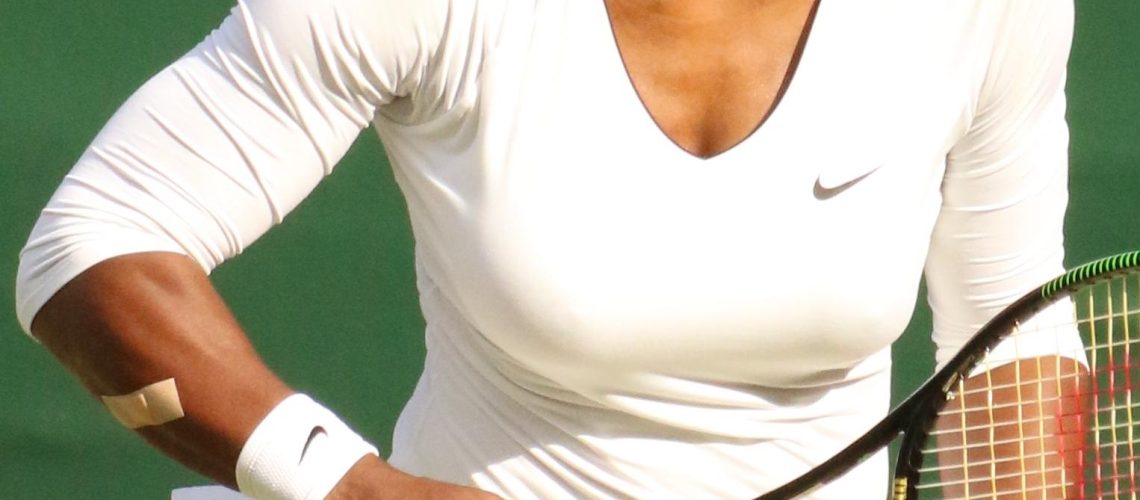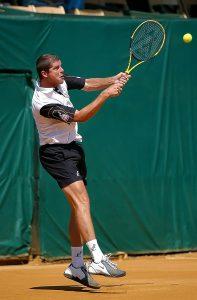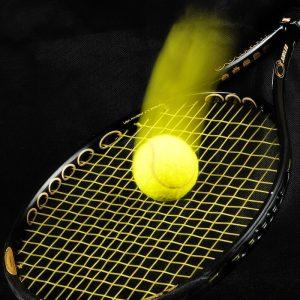We may earn money or products from the companies mentioned in this post.
Introduction to Walkover

Tennis is a sport known for its exhilarating rallies, intense competition, and displays of skill and athleticism However, there are instances where matches end abruptly without a single serve being made or a single point being scored This phenomenon is known as a walkover In this article, we will delve into the definition of walkover in tennis, explore the reasons behind their occurrence, and highlight the importance of understanding this aspect of the game
Definition of Walkover in Tennis
A walkover in tennis refers to a situation where one player or team wins a match by default because their opponent(s) fail to appear or withdraw from the match before it begins Essentially, it is an uncontested victory that requires no actual play on the court The winning player or team is automatically awarded the win without having to compete
Reasons for Walkovers Occurring
There can be various reasons why walkovers occur in tennis One common scenario is when players sustain injuries that prevent them from participating in a scheduled match Injuries can range from minor strains and sprains to more serious conditions that require rest and rehabilitation
Another reason for walkovers can be attributed to personal circumstances such as illness or family emergencies These unforeseen events may arise at any time, leaving players with no choice but to withdraw from their matches
In some cases, scheduling conflicts or logistical issues may also lead to walkovers Travel delays, visa problems, or overlapping tournament commitments can force players to prioritize certain matches over others and result in withdrawals
Importance of Understanding Walkovers
Understanding walkovers is crucial for both players and fans of tennis For players, it is essential to be aware of the rules surrounding walkovers, including the consequences and implications they may have on rankings, prize money, and future tournament eligibility
For fans, comprehending walkovers adds a layer of understanding to the sport It allows them to appreciate the challenges faced by players and empathize with their situations Additionally, being knowledgeable about walkovers enables fans to better analyze match results and contextualize a player’s performance within the broader context of their journey through a tournament
In conclusion, walkovers in tennis are a unique aspect of the game that can influence outcomes and shape players’ careers By familiarizing ourselves with this concept, we gain a deeper appreciation for the complexities of professional tennis and enhance our overall enjoyment of the sport
Types and Causes of Walkovers in Tennis

Walkovers in tennis can occur for various reasons, ranging from player withdrawals due to injury or illness to disqualifications resulting from conduct violations In some cases, a player may simply fail to show up for a match without prior notice Let’s take a closer look at the different types and causes of walkovers:
Player Withdrawal Due to Injury or Illness
1 Pre-match injuries or illnesses: Before a match even begins, players may suffer from injuries or fall ill, preventing them from participating These circumstances can range from minor sprains or strains to more severe conditions that require immediate medical attention
2 Mid-match injuries or illnesses that lead to a walkover decision: Sometimes, during the course of a match, players may sustain sudden injuries or experience debilitating health issues that make it impossible for them to continue playing In such cases, the referee or medical staff may decide to award their opponent a walkover victory
Player Disqualification Due to Conduct Violations
1 Unsportsmanlike conduct incidents leading to a walkover: Tennis is known for its strict code of sportsmanship and fair play However, there are instances where players engage in unsportsmanlike behavior on the court, such as verbal abuse towards opponents or officials, racquet smashing, or deliberately hindering gameplay If these incidents escalate and result in penalties against the offending player, they may ultimately face disqualification and grant their opponent a walkover win
2 Code violations and penalties resulting in disqualification and subsequent walkover status: The governing bodies of tennis have established rules and regulations that all players must adhere to during matches If a player repeatedly violates these codes by committing offenses like time violations, coaching violations, or illegal equipment usage, they may incur penalties that eventually lead to disqualification and a walkover for their opponent
No-Shows
No-shows occur when a player fails to appear for a scheduled match without providing prior notice or valid reasons This can be due to various factors such as miscommunication, travel issues, personal emergencies, or simply choosing not to participate Regardless of the reason, a no-show results in an automatic walkover victory for the opposing player
In conclusion, walkovers in tennis can happen due to player withdrawals caused by injuries or illnesses, disqualifications resulting from conduct violations, and instances where players fail to show up for matches without prior notice These circumstances not only affect the outcome of individual matches but also have broader implications for tournament schedules and the overall dynamics of the sport
Impact of a walkover on the tournament, players, and rankings

Effect on the draw and tournament scheduling
When a player withdraws from a match, it has significant implications for the overall structure of the tournament Firstly, it results in the advancement of their opponent into the next round without having to play the match This can disrupt the balance of the draw and potentially create an uneven playing field for those who have earned their progress through hard-fought victories
In addition to affecting individual matches, a walkover also leads to a redistribution of court time within the event schedule With one less match to accommodate, organizers may utilize that freed-up time for other activities such as promotional events or additional matches from different rounds While this ensures efficient use of resources, it can leave some fans disappointed by missing out on witnessing certain matchups
Consequences for both involved players
The player who withdraws from a match due to injury or other reasons faces several consequences Firstly, they miss out on valuable ranking points that would have been earned had they competed and performed well in the match These points are crucial for maintaining or improving their position in the rankings hierarchy
Furthermore, withdrawing from a match means forfeiting any potential prize money associated with advancing further in the tournament In addition to financial implications, it can also impact their reputation among fans and fellow players A withdrawal may be seen as a lack of commitment or dedication to their sport
On the flip side, for the recipient of a walkover victory, there are mixed implications While they advance effortlessly into the next round without physically exerting themselves on court, they may face challenges in terms of preparation and maintaining momentum Suddenly finding themselves with unexpected rest days can disrupt their competitive rhythm and potentially affect their performance in subsequent matches
Impact on rankings following a tournament marred by multiple walkovers
When a tournament is plagued by multiple walkovers, it can have a significant impact on the rankings of all players involved Walkovers disrupt the expected progression of matches and can introduce an element of unpredictability into the results This can lead to fluctuations in rankings, as players who may have been expected to progress further are eliminated prematurely
The ranking system takes into account a player’s performance in tournaments, and when there are numerous walkovers, it becomes challenging to accurately assess their true standing The absence of head-to-head competition between players due to walkovers can create discrepancies in ranking points and potentially affect a player’s overall position
In conclusion, walkovers have far-reaching consequences for tournaments, players, and rankings They disrupt the draw, impact scheduling, and influence the fortunes of both those who withdraw and those who receive a walkover victory In cases where multiple walkovers occur within a tournament, it can lead to uncertainties in rankings calculations and introduce volatility into the order of players
Handling Walkovers: Rules & Regulations Governing Tennis Bodies

Tennis, a sport known for its intense competition and display of skill, is governed by various bodies that have established rules and regulations to ensure fair play One important aspect of these regulations is the handling of walkovers, which occur when a player withdraws from a match or fails to show up Let’s take a closer look at how different tennis bodies handle walkovers
WTA (Women’s Tennis Association) Rules Related to Walkovers
The WTA has specific guidelines in place regarding walkovers Before an official withdrawal or walkover can be announced, certain procedures must be followed These procedures may include notifying tournament officials within a specified timeframe and providing valid reasons for the withdrawal
Unjustified withdrawals are taken seriously by the WTA, and penalties may be imposed on players who fail to adhere to the rules These penalties can range from fines to potential suspensions, depending on the severity of the violation
ITF (International Tennis Federation) Regulations Regarding Walkovers
The ITF, as the governing body for international tennis, also has regulations in place concerning walkovers In cases where players commit code violations that lead to disqualifications, resulting in a walkover for their opponent, strict consequences can be enforced
Furthermore, the ITF has specific guidelines for junior-level tournaments regarding withdrawals and no-shows These guidelines aim to instill discipline and promote responsibility among young tennis players participating in ITF-sanctioned events
ATP (Association of Tennis Professionals) Rules on Walkovers
The ATP governs men’s professional tennis and has its own set of rules when it comes to walkovers These regulations address issues specific to the men’s circuit and outline the procedures to be followed in case of a withdrawal or no-show
Walkovers can have significant implications for players’ rankings and prize money distribution within the ATP Tour The ATP takes these factors into consideration when managing walkovers to ensure fairness and maintain the integrity of the rankings system
Grand Slam Tournament Rules & Procedures for Managing Walkovers
The prestigious Grand Slam tournaments, including Wimbledon, Roland Garros, Australian Open, and US Open, have their own rules and procedures for handling walkovers during their events
Specific guidelines are in place to address withdrawals during Grand Slam matches These guidelines dictate how players should communicate their inability to participate, as well as any penalties or consequences that may arise as a result of a withdrawal
Each Grand Slam tournament has its approach to dealing with walkovers While some similarities exist between them, such as requiring proper notification and valid reasons for withdrawals, there are also differences in how they handle these situations
Conclusion

The issue of walkovers in tennis is one that requires careful attention from governing bodies By establishing clear rules and regulations surrounding withdrawals and no-shows, tennis organizations like the WTA, ITF, ATP, and Grand Slam tournaments aim to promote fair play while considering player well-being It is crucial to strike a balance between maintaining a high level of competition and ensuring that players are treated fairly when unforeseen circumstances arise
Useful Links

In Tennis What Is A Walkover
What does a “walkover” mean in tennis?
What is a walkover in tennis?
What is a Walkover in Tennis? – TennisLovers
What is a Walkover in Tennis & How Does It Affect Your …
What Does Walkover Mean in Tennis – What are Examples?
In Tennis, What Does A Walkover Mean and How … – YouTube
What is a Walkover in Tennis? Meaning, Rules, Stats …
What is Walkover In Tennis? – Explanation and Origins
Walkover In Tennis: Meaning, Examples & Why It Happens
What Happens When a Player Retires, During Rain Delays …
What is Walkover in Tennis?
What is the definition between Forfeit, Walkover, and Concede?
What Is A Walk Over In Tennis
What Is Walkover In Tennis?
DRAW SHEET TERMINOLOGY AND PROCEDURES
What Does Walkover Mean in Tennis? Types and Examples
Why has Rafael Nadal pulled out of Wimbledon? And what …
What is a walkover in tennis?
The Ultimate Guide to Walkovers in Tennis: Everything You …






